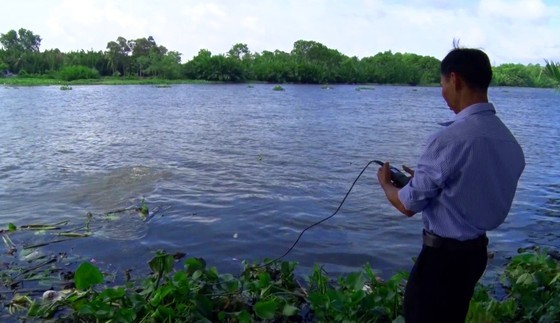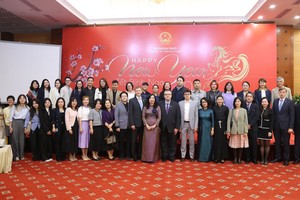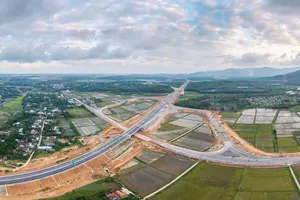 |
A staff from the Southern Institute of Water Resources Research is checking the salinity in the river |
According to the Southern Institute of Water Resources Research, the saline intrusion is forecast to be worst from the end of February to March. In order to prevent problems caused by drought and high salinity levels, local administrations should take measures to accumulate water for daily life and crops.
This morning, the Southern Institute of Water Resources Research said that from January 19 to February 9, the discharge of water from upstream hydroelectric power plants in China to the downstream decreased to the lowest level in recent months. If the limited water discharge continues for a long time, saltwater intrusion is highly likely to occur early and penetrate further inland from the second half of February and last until March. Thus, the Mekong Delta needs to proactively store water as soon as possible while people should use water economically in the second half of February and early March.
The Institute said that saltwater intrusion took place early in December 2022 and continued to rise in February 2023. worse, the areas along the Tien and Hau rivers may still be affected by high tides in February 2023. Saltwater can penetrate 45-60 km further inland; therefore, if the upstream plants operate abnormal discharge of water, salt water can intrude 50-65 km inland, affecting the intake of water from sluices. Abnormal salinity, drought and water shortage may occur in areas where there is no complete salt control system.
Currently, the Mekong Delta has about 400,000 hectares of rice and fruit trees in areas at risk of being affected by drought and salinity. In order to prevent risks caused by drought and salinity, localities need to actively build up solutions to respond, proactively storing water for daily life and dry crops, and storing water in canals and lakes before periods of high salinity.
Simultaneously, responsible agencies should strengthen the monitoring of salinity, and update regular bulletins of saltwater intrusion to adjust their plans in accordance with the changes in water resources.
























